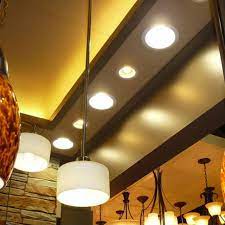Introduction:
Lighting is a fundamental aspect of our daily lives, playing a crucial role in both functionality and aesthetics. Whether it’s the warm glow of a bedside lamp, the crisp illumination of a modern office space, or the dramatic interplay of light and shadow in a piece of art, the impact of lighting is profound and multifaceted.
The Science of Light:
At its core, lighting is the manipulation of light, a form of electromagnetic radiation that stimulates the human visual system. Understanding the science behind lighting involves delving into concepts such as color temperature, brightness, and spectral distribution. Color temperature, measured in Kelvin, determines whether light appears warm (lower Kelvin) or cool (higher Kelvin). Brightness, measured in lumens, quantifies the intensity of light. Spectral distribution refers to the varying intensities of light at different wavelengths, influencing the way colors are perceived.
Natural vs. Artificial Lighting:
Nature provides one of the most exquisite examples of lighting—the sun. Its natural cycle dictates our circadian rhythm and has inspired the design of artificial lighting systems. Daylighting, the use of natural light to illuminate interior spaces, not only reduces energy consumption but also positively impacts human well-being. Artificial lighting, on the other hand, offers control and consistency, allowing us to create specific atmospheres and enhance visibility irrespective of external conditions.
Architectural Lighting:
In architecture, lighting goes beyond mere functionality; it becomes a design element that shapes and defines spaces. Well-designed architectural lighting can highlight key features, create focal points, and establish the overall ambiance of a place. From the ambient glow of a restaurant to the precise illumination of a museum exhibit, architectural lighting transforms environments and influences human experiences.
Technological Advancements:
The evolution of lighting technology has been nothing short of revolutionary. Traditional incandescent bulbs have given way to energy-efficient alternatives such as compact fluorescent lamps (CFLs) and light-emitting diodes (LEDs). LEDs, in particular, have become a staple in modern lighting due to their energy efficiency, long lifespan, and versatility. Smart lighting systems further enhance the user experience, allowing for remote control, color customization, and integration with other smart home devices.
Art and Lighting:
In the realm of art, lighting is a powerful tool for expression. Artists use light to evoke emotions, create depth, and draw attention to specific elements within their works. Whether in photography, sculpture, or installations, the interplay between light and shadow can transform a static piece into a dynamic and immersive experience. Light becomes both the medium and the message, inviting viewers to engage with art on a sensory level.
Human Well-Being:
Lighting extends beyond the visual realm, influencing our psychological and physiological well-being. Circadian lighting, which mimics the natural progression of sunlight, has gained attention for its potential to regulate sleep-wake cycles and improve mood. The right lighting can enhance productivity in workspaces, create a calming atmosphere in healthcare settings, and set the mood for relaxation in homes.
Conclusion:
From the scientific intricacies of color temperature to the artistic expression in visual arts, lighting is a multifaceted phenomenon that weaves its way into every aspect of our lives. As technology advances and our understanding of the impact of light on human well-being deepens, the world of lighting continues to evolve. Whether it’s the flicker of a candle flame or the precision of a state-of-the-art LED system, lighting remains an integral part of the human experience, shaping our environments and influencing our perceptions.


